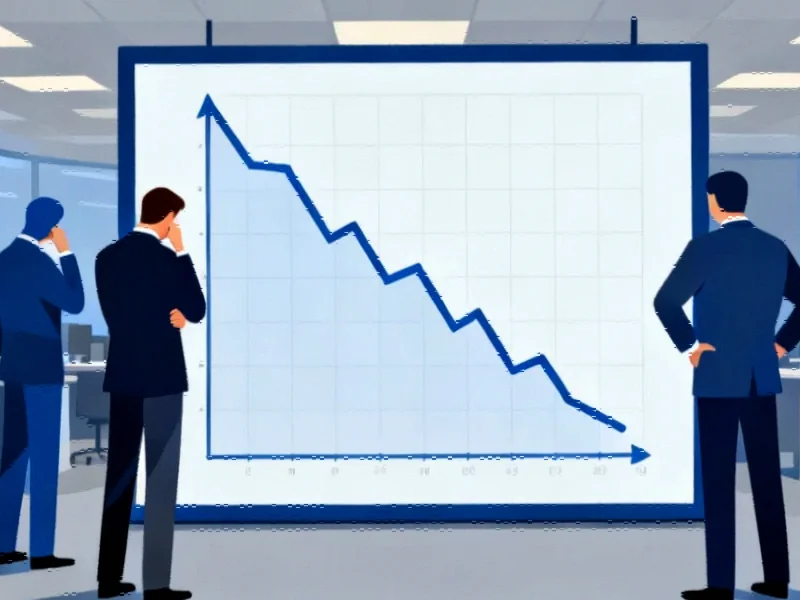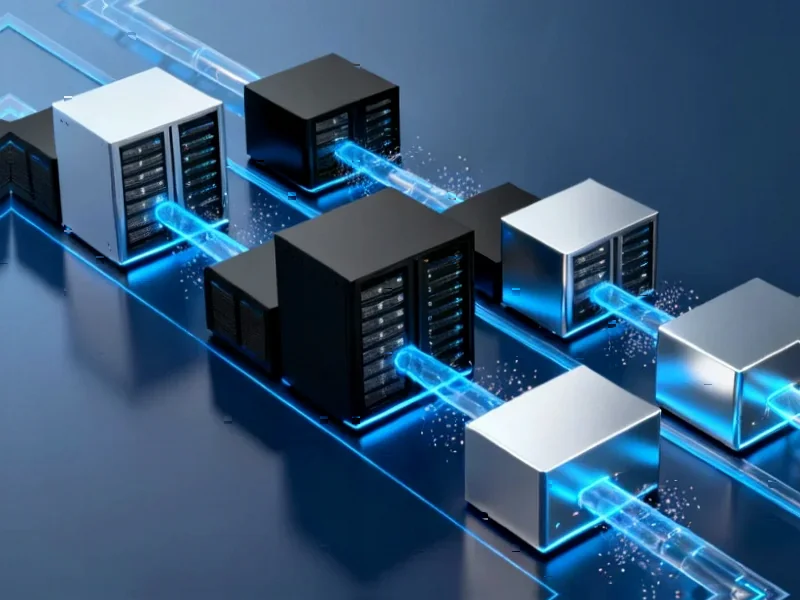The Jobless Growth Conundrum
As artificial intelligence rapidly transforms business operations, economists and corporate leaders are grappling with a fundamental question: Can sustained economic growth coexist with stagnant or declining employment? Recent analyses from major financial institutions suggest we may be entering an era of “jobless growth” – where productivity gains driven by AI don’t translate into proportional job creation.
Table of Contents
Goldman Sachs recently highlighted this troubling pattern in their “Jobless Growth” analysis, noting the unusual disconnect between strong economic expansion and sluggish job growth. While not as extreme as some predictions – like Vinod Khosla’s forecast that AI will automate 80% of jobs by 2030 – the investment bank identified “concerning signs” in how companies are implementing AI technologies.
Historical Precedents and Economic Reality
The 2001 recession following the internet bubble burst provides a sobering case study. During that period, companies that had been gradually implementing internet technologies used the economic downturn as justification for mass layoffs, resulting in what economists termed a “jobless recovery.” Many of those positions never returned, even when economic conditions improved.
Current developments suggest history might be repeating itself. Shortly after publishing their analysis, Goldman Sachs internally warned employees about potential job cuts and slower hiring, specifically citing “rapidly accelerating advancements in AI” as drivers of productivity gains. Similarly, Citigroup CEO Jane Fraser detailed how AI implementation is creating massive efficiency improvements, including one software production application that saves approximately 100,000 hours weekly., as our earlier report
The Banking Sector’s AI Transformation
Bank of America provides perhaps the most striking example of AI-driven efficiency. CEO Brian Moynihan revealed that while the bank employed 285,000 people fifteen years ago, it now operates with just 213,000 employees – a 25% reduction. Despite this smaller workforce, the institution transformed from a $2 billion loss to a $27 billion profit, demonstrating how AI can dramatically boost output with fewer human resources., according to industry analysis
This trend extends beyond traditional banking. Meta recently confirmed plans to lay off 600 employees in its AI division as part of restructuring efforts, though the company maintains its top AI talent will remain unaffected. Meanwhile, Microsoft’s substantial compensation increase for CEO Satya Nadella – totaling $96.5 million for fiscal 2025 – reflects the board’s recognition of his success in positioning Microsoft as an AI industry leader.
The Innovation Counterargument
Historical evidence offers some reassurance. Throughout industrial history, general-purpose technologies have consistently eliminated certain job categories while creating new, often unforeseen opportunities. The printing press, electricity, and computers all followed this pattern – initial job displacement followed by new industries and elevated living standards.
However, AI presents a unique challenge due to its potential to surpass human intelligence across multiple domains. This technological leap forces us to confront whether this time truly is different – whether AI’s capabilities might outpace human adaptability in creating new economic roles.
Corporate Implications and Strategic Shifts
The AI revolution is driving significant corporate restructuring beyond mere headcount reductions. Citibank’s decision to combine CEO and board chair roles under Jane Fraser, accompanied by a $25 million bonus, reflects the heightened stakes in navigating AI transformation. Similarly, Elon Musk’s advocacy for unprecedented compensation at Tesla hinges on his vision for developing advanced AI and robotics capabilities.
Infrastructure investments also reflect this AI-centric future. JPMorgan Chase’s new $3 billion Manhattan headquarters, designed to accommodate 10,000 employees with extensive amenities, represents a substantial bet on continued human workforce relevance despite automation advances.
Global Economic Context
While AI transformation accelerates, traditional economic indicators show mixed signals. Major indices including the S&P 500 and STOXX Europe 600 showed modest movement, while Asian markets experienced greater volatility. Bitcoin’s surge to $109,000 suggests continued investor interest in alternative assets amid technological uncertainty.
Geopolitical factors add complexity, with new U.S. sanctions against Russian oil companies and ongoing government shutdown effects creating additional economic headwinds that could interact with AI-driven employment trends.
The Path Forward
As organizations like Fortune partner with Workday to explore how CFOs are approaching the AI era, business leaders face critical decisions about workforce planning, technology investment, and strategic positioning. The central challenge remains balancing productivity gains from AI with sustainable employment models that maintain economic stability and social cohesion.
The coming months may prove decisive in determining whether AI enables truly jobless growth or simply accelerates another cycle of creative destruction – eliminating certain roles while creating opportunities we cannot yet envision. What remains clear is that the relationship between technological progress and employment will define economic policy and corporate strategy for the foreseeable future.
Related Articles You May Find Interesting
- Semiconductor Giants Question Taiwan’s Renewable Energy Roadmap Amid Power Secur
- Enterprise AI Initiatives Stalled by Data Quality Crisis, Experts Warn
- Rightcharge Secures €1.8 Million to Expand Fleet EV Charging Payment Platform Ac
- How Wonder Studios’ $12M Funding Blueprint Positions It as Hollywood’s Creative
- Deceptive by Design: How Industrial Systems Face Growing Threats from UX Manipul
This article aggregates information from publicly available sources. All trademarks and copyrights belong to their respective owners.
Note: Featured image is for illustrative purposes only and does not represent any specific product, service, or entity mentioned in this article.



